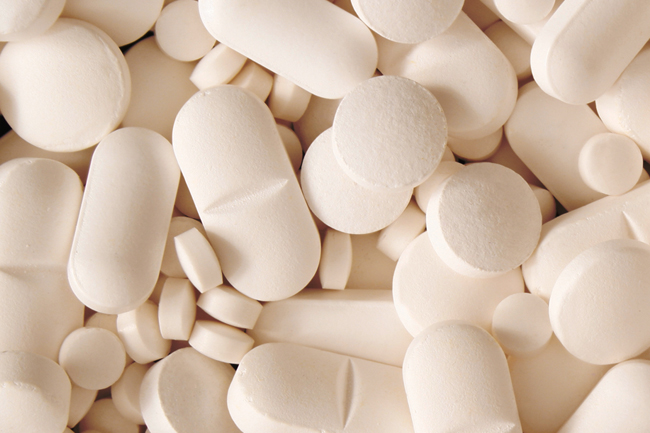Current Challenges and Control Strategies for Polysorbates in Biopharmaceuticals
Surfactants, such as polysorbate 20/80 (PS20 and PS80) and poloxamer 188 (P188), are considered a critical class of excipients that are nearly ubiquitous in biopharmaceutical drug product (DP) formulations. These functional excipients play a crucial role in providing the biologic active pharmaceutical ingredient (API) with protection from interfacial stresses, allowing for appropriate processing, storage, and handling of the DP while ensuring its stability, according to the corresponding quality target product profile (QTPP). Notably, surfactants have been used as stabilizing excipients for biopharmaceuticals for decades. However, it is equally important to acknowledge the challenges associated with their use (see industry challenges).
Current Industry Challenges Associated with Polysorbates
- Polysorbate degradation is mediated by host cell proteins (enzymatic degradation) or by oxidative degradation:
- Adsorption of surfactant to manufacturing process equipment e.g. filters:
- Dilution of surfactant during administration (e.g., in an IV bag); polysorbate adsorption to administration material:
- Surfactant formulations in pre-filled syringes:
- Raw material impurities, batch to batch variability (e.g. peroxides):
liberates free fatty acids, which form subvisible and visible particles.
protein loses protection against interfacial stress, process failure.
API instability, underdosing.
silicone oil associated formation of subvisible and visible particles.
API/polysorbate degradation.
Structural Heterogeneity
 Polysorbates are a group of amphipathic, nonionic surfactants derived from ethoxylated sorbitan or isosorbide (derivatives of
sorbitol) esterified with fatty acids. Polysorbates, particularly PS20 and PS80, are the most commonly used surfactants in biopharmaceutical formulations. In some cases, P188 was employed as a surfactant in certain biopharmaceutical formulations.
Polysorbates are a group of amphipathic, nonionic surfactants derived from ethoxylated sorbitan or isosorbide (derivatives of
sorbitol) esterified with fatty acids. Polysorbates, particularly PS20 and PS80, are the most commonly used surfactants in biopharmaceutical formulations. In some cases, P188 was employed as a surfactant in certain biopharmaceutical formulations.
Polysorbates are a highly heterogeneous mixture of compounds that directly result from the synthetic processes used in their manufacturing. The current manufacturing procedures involve using complex and natural raw materials such as coconut or palm oil and harsh processing conditions, leading to an extraordinary degree of heterogeneity among these compounds. Commercially available polysorbates, such as PS20 and PS80, are chemically diverse mixtures, with only 20% or less of their total composition accounting for the canonical structure. The heterogeneity of polysorbates is, to a large extent, a result of a significant amount of process-related impurities and byproducts. The observed differences in polysorbate quality between vendors, product grades, and lots can be associated with different synthetic routes, purification processes, and raw materials.
Polysorbate Degradation
Polysorbates are susceptible to degradation via oxidation and hydrolysis. Hydrolysis of polysorbates can be induced chemically or enzymatically, resulting in a split of the fatty acid ester bond and the release of free fatty acids that may form subvisible or visible particles. Enzyme-induced polysorbate hydrolysis has been identified as the major cause of polysorbate hydrolysis in biological drug products, as chemical hydrolysis at typical protein formulation pHs is limited. Trace amounts of residual host cell proteins, such as lipases, have been reported to induce polysorbate hydrolysis in protein formulations. Some co-purifying lipases show similar physicochemical properties as the protein of interest, making their removal from the product difficult.
Attempts have been made to knock out lipoprotein lipase (LPL) from the Chinese Hamster Ovary (CHO) cell line, which reduced LPL expression by more than 95%. Still, it only reduced polysorbate degradation by 41-57%, suggesting several lipases may contribute to polysorbate degradation. The contradictory findings regarding polysorbate in the scientific community may be attributed to the fact that the lipase responsible for promoting polysorbate hydrolysis is often undetectable by using traditional high-performance liquid chromatography, and developing more sensitive radioimmunoassays, for example, is difficult and not universally applicable. Tracking, monitoring, and establishing a correlation between lipase activity and polysorbate hydrolysis during DS downstream process development is generally suggested using an in vitro lipolytic activity assay.
Common indicators for lipase mediated polysorbate degradation:
- Two-step downstream process without polishing steps (e.g., hydrophobic interaction chromatography), often using overloaded columns to achieve downstream efficacy.
- Immediate or strongly accelerated visible particle formation on DP stability (without a lag phase).
- Protein content-dependent polysorbate degradation visible particle formation (increased protein concentration leads to increased polysorbate degradation.
- No polysorbate degradation and visible particle formation in the corresponding placebo formulations.
Analytical Toolbox
Implementing a holistic polysorbate analytical control strategy in biological drug substances (DS) and DP is critical to ensure product safety and efficacy and requires quantitative and qualitative analytical methodologies. Robust quantitative analysis is necessary to ensure that the correct concentration of polysorbate is present in the DS or DP and to observe and address any surfactant loss during the manufacturing process such as through adsorption to filter membranes during sterile filtration. Quantitative analysis is also essential for stability studies to monitor surfactant degradation, which can adversely affect DP critical quality attributes such as sub-visible particle counts or the formation of visible particles. If quantification indicates a reduction in polysorbate content in DS and DP products, it is crucial to characterize the chemical integrity using extended characterization methods to understand the underlying degradation mechanism.
Extended characterization methods capable of detecting chemical transformations in polysorbate molecules are important for building product and process understanding and supporting root cause investigation in an unexpected event of polysorbate degradation. Routine analytical methodology for polysorbate quantitative polysorbate methods are based on either indirect quantification of polysorbate through its interaction with a fluorophore (such as a plate reader-based fluorescent micelle assay - FMA) or direct quantification of polysorbate using “universal detectors” such as an evaporative light scattering detector (ELSD) or charged aerosol detector (CAD).
Table 1 Analytical toolbox for polysorbate testing at Clear Solutions Laboratories
| Methodology | Application | Purpose |
|---|---|---|
| Fluorescence micelle assay with or without protein precipitation | Routine | Quantification |
| Mixed mode ELSD/CAD step gradient | Routine | Quantification |
| Mixed mode ELSD/CAD shallow gradient | Characterization | PS profiling; characterization |
| Mass spectrometry | Characterization | Fatty acid profiling, fatty acid quantification; oxidative degradants |
| Particle ID (FTIR) | Characterization | Fatty acid visible particle identification |
| Flow imaging microscopy | Characterization | Fatty acid subvisible particle characterization |
| Lipolytic activity assay | Characterization | Lipase activity |
Mass Spectrometry
To effectively mitigate polysorbate degradation, it is crucial to identify the specific polysorbate degradation mechanism. Mass spectrometry has proven to be an invaluable tool for this purpose. A reversed-phase high-performance liquid chromatography (HPLC)-MS method can be applied to monitor the ratio between acetylated and non-acetylated species. MS is also used to profile and quantify the fatty acid composition in DS and DP samples. Moreover, the HPLC-MS methods can characterize new species from oxidative polysorbate degradation.
Particles
The degradation of polysorbate has the potential to lead to the formation of subvisible and, subsequently, visible particles from insoluble degradants, specifically free fatty acids. Subvisible particle counts and morphology can be characterized using flow microscopy imaging. A typical workflow for visible free fatty acid particle identification involves isolating them through filtration over gold-coated filters and analyzing them using light microscopic and spectroscopic techniques (e.g., Fourier Transform Infrared Spectroscopy).
Lipolytic Activity
HCP lipases are often responsible for the hydrolytic degradation of polysorbate in biologics DPs. While HCPs in therapeutic products are well-controlled, the safety thresholds applied may not always account for the trace lipase amounts at which enzymatic activity, especially lipolytic activity, can be observed. Therefore, in addition to assessing DS purity against HCP safety thresholds, it is important to also evaluate residual lipolytic activity to control polysorbate degradation. Additionally, the assay can be used to support efforts aimed at improving the depletion of lipases during downstream processing development. The lipolytic activity assay can also be used to identify the root cause of hydrolytic polysorbate degradation during DP stability studies. For this purpose, the results of the lipolytic activity test should be correlated to routine stability testing results, such as HPLC-ELSD/cholic acid or plate reader-based Fugl-Meyer Assessment test results.
Conclusion
It is challenging to develop a polysorbate control strategy and understand the structure-functional relationship of polysorbate. Moreover, these protein stabilizers may undergo degradation through oxidation and hydrolysis, which can negatively affect product quality. There has been an increase in reports of visible/subvisible fatty acid particle formation resulting from polysorbate hydrolysis catalyzed by residual lipases.
Therefore, a holistic polysorbate control strategy needs to be implemented, considering raw material control, adequate downstream process development (supported by lipolytic activity testing), DP process development, development of a robust quantitative and qualitative analytical toolbox for quality control testing, product/process extended characterization testing. This includes the implementation of product-specific polysorbate specification in case polysorbate degradation impacts critical quality attributes.
Want to learn more? Join the Free PDA Webinar on Surfactants in Biopharmaceuticals!
Wednesday, 07 February 2024, 17:00-19:00 CET
We have an exceptional speaker line up and agenda:
Mechanisms for protein particle generation during interfacial stresses and its inhibition by surfactants, Prof. John Carpenter, Carpenter Biopharma Consulting.
Root causes and mitigations to surfactant-related liabilities, Inn Yuk, Genentech/Roche & Tarik Khan,Roche.
Control strategies for surfactants in biopharmaceuticals, Atanas Koulov, Clear Solutions Laboratories.
Regulatory considerations for surfactants in biopharmaceuticals, Ashutosh Rao, U.S. FDA.



